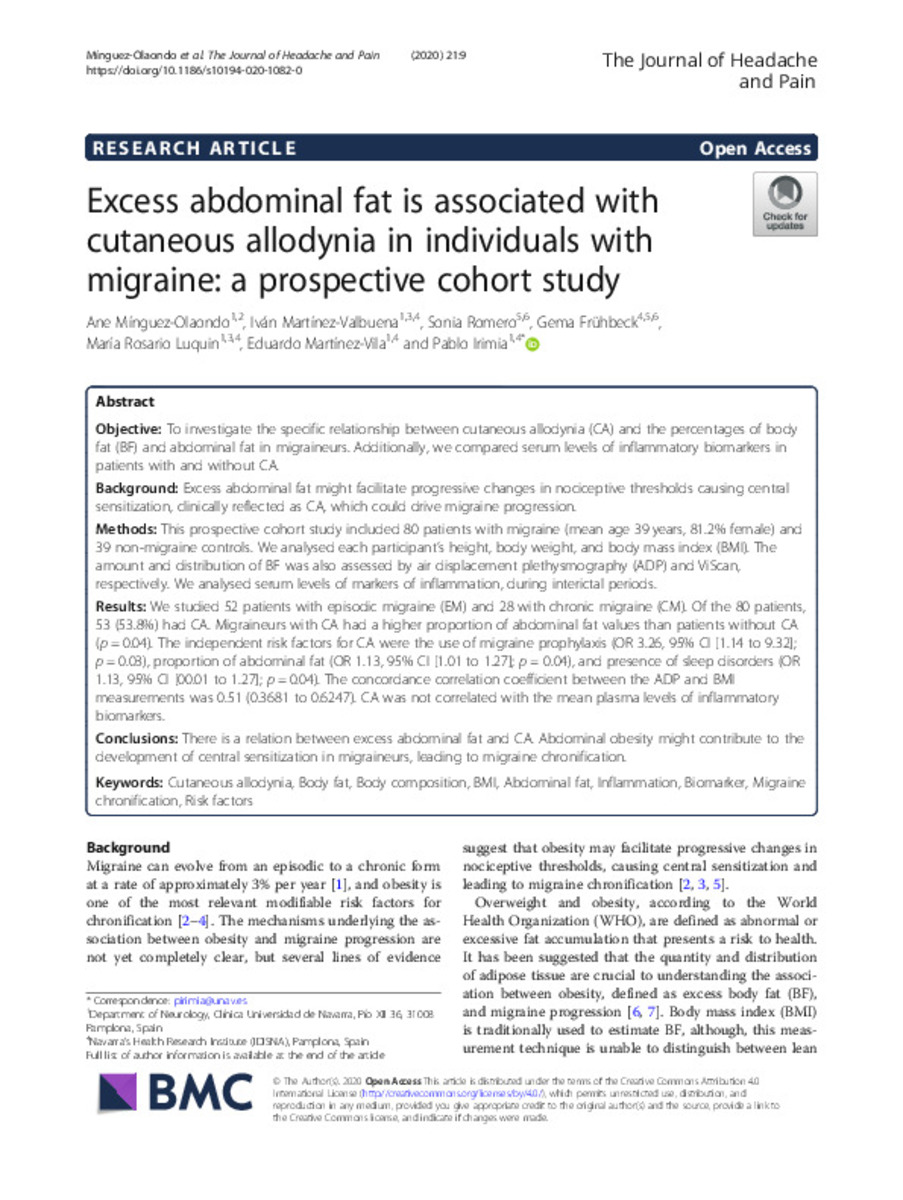Excess abdominal fat is associated with cutaneous allodynia in individuals with migraine: a prospective cohort study
Palabras clave :
Cutaneous allodynia
Body fat
Body composition
BMI
Abdominal fat
Inflammation
Biomarker
Migraine chronification
Risk factors
Fecha de publicación :
2020
Nota editorial :
Springer Nature remains neutral with regard to jurisdictional claims in
published maps and institutional affiliations.
Nota:
This article is distributed under the terms of the Creative Commons Attribution 4.0
International License (http://creativecommons.org/licenses/by/4.0/), which permits unrestricted use, distribution, and
reproduction in any medium, provided you give appropriate credit to the original author(s) and the source, provide a link to
the Creative Commons license, and indicate if changes were made.
Cita:
Mínguez-Olaondo, A. (Ane); Martinez-Valbuena, I. (Iván); Romero, S. (Sonia); et al. "Excess abdominal fat is associated with cutaneous allodynia in individuals with migraine: a prospective cohort study". The Journal of Headache and Pain. (21), 2020, 9
Aparece en las colecciones:
Estadísticas e impacto
0 citas en

Los ítems de Dadun están protegidos por copyright, con todos los derechos reservados, a menos que se indique lo contrario.







